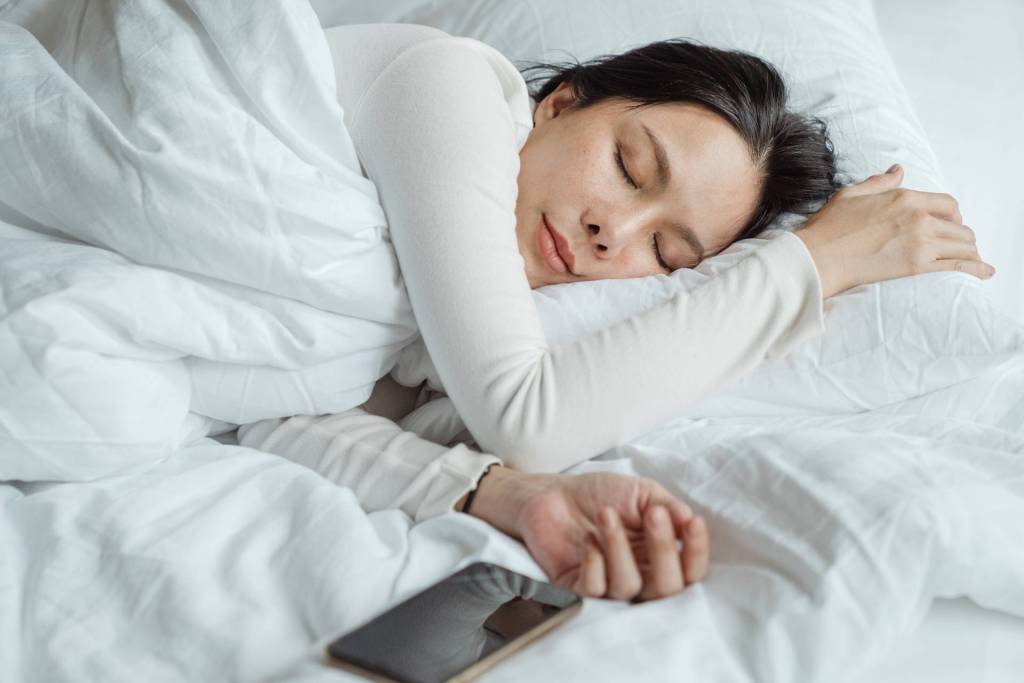Sleep technology as an industry is flourishing. It’s an exciting time of invention with many devices aiming to improve sleep.
The sleep technology product list keeps growing. There are wearables and apps. There are smart beds and fitness trackers. In addition, there are gadgets that optimize sleep and external sleep monitors. Furthermore, there are environment adjusting devices that can change temperature, noise, light, and humidity. These are all examples of sleep technology.
There are also treatments for snoring, circadian problems, sleep apnea, and insomnia. Therefore, what does the future of sleep look like in this technological age?
Can We Improve Natural Sleep with Sleep Technology?
Sleep is a physiological process that all creatures go through. For millennia, we have been using our rational intellect to achieve seemingly impossible feats. Technology has its place. It may even help you sleep better.
Modern Sleep Disorder Treatment Technology
Technology has been changing the way sleep disorders are treated. CPAP has been around for about 35 years. It was the revolutionary sleep apnea and snoring treatment of its day. Using that technology would often prevent drastic surgical treatments.
CPAP therapy is getting easier to use. AutoCPAP now self-adjusts depending on real-time breathing disruptions. In addition, it connects to providers via a cloud-based system that collects data and adjusts therapy.
The hypoglossal nerve stimulator is useful in treating severe sleep apnea. It has been doing so for over a decade. This tongue pacemaker awakens the airway muscles when sleeping. Furthermore, it can help people who cannot tolerate CPAP.
Lightbox therapy may help with sleeplessness and circadian rhythm issues. Additionally, phototherapy, whether using modern light spectacles worn on the face or a lamp can help with insomnia.
Newer technologies may change how we sleep. Scientists are transforming the bedroom, the bed, and the sleeper.
Apps to Sleep
There are a great number of smartphone sleep apps. Many track sleep with movement. After that, they use this data to set a morning alarm. Furthermore, there are apps to teach relaxation. They even play calming sounds. Many apps work with wearables as well as other devices.
Wearables and Fitbits
Fitbit, Nike, Jawbone, Apple, and others make wristbands and smartwatches. Originally marketed as upgraded step counters, they now measure heart rate, movement, and blood oxygen levels to estimate sleep stages. In addition, they can help by advising changes to promote sleep.
SmartBeds & Mats
The bed has become a data source as the Internet of Things expands. Newer solutions collect data like a wearable. In addition, the bed may be able to lift the head to decrease sleep apnea or snoring. Temperature regulation may also help with insomnia.
Monitors at the Bedside
External monitors are ideal for the nightstand. These sleep surveys collect data. Furthermore, they may expand interventions. The SleepScore Max is a popular option.
Changing the Environment to Improve Sleep
These technologies may be able to make changes to improve sleep in addition to monitoring sleep parameters. These can connect to IoT to create a better environment.
Individual sleep environment intervention is also a possibility. Some of these could be classified as follows:
Light Technology
Most individuals prefer a dark room. Therefore, black-out curtains might help keep you asleep at night. However, they can also make it difficult to get up when you need to. What if technology could help us better experience natural darkness and light cycles? Technology can open the shades in the morning. It can also be programmed to increase illumination gradually like a sunrise. Optimum timing of light exposure may considerably improve sleep.
Sound Technology
External noise clearly disrupts sleep. However, white noise devices can help block out sounds. A calming sound can either replicate natural sounds or just filter noise. The Nightingale device aims to fill the room with sleep-inducing noises. Alternatively, you can cuddle up to the Somnox robot to achieve the same result.
Devices to Change the Temperature
Sleeping in a cool place is great for sleep. Our body temperature declines overnight, mirroring the changes in the environment. The Ebb sleep device, for example, cools the brain to aid sleep.
Humidity Technology
Newer technology may also be able to control sleep humidity. This may help manage snoring, allergies, and sleep apnea.
Air Flow Technology
A sleep pod could control air pressure. This can decrease airway constriction while sleeping without a cumbersome CPAP mask. This would reduce sleep apnea blockages and snoring.
Altering Brain Wave Activity
Technology may be able to modify brain waves to deepen sleep by reinforcing slow waves. The Dreem headband and Phillips SmartSleep are two examples.
The Future of Sleep Technology
Telemedicine for sleep disorders is growing. In addition, access to sleep physicians will improve. In addition, artificial intelligence may be able to help control sleep disorders like insomnia. Furthermore, this may make CBT for insomnia more accessible.
The advancement of sleep technology has some dangers. Sometimes the hype about a product overtakes the science. In addition, unscrupulous people may create campaigns to gather big sums of money with enticing visuals. However, if they fail to deliver on their promises, it can hurt the whole industry. This may necessitate FTC Bureau of Consumer Protection supervision. Regulation by the FDA may help to guarantee that these approaches do not damage people who are honestly seeking help.













